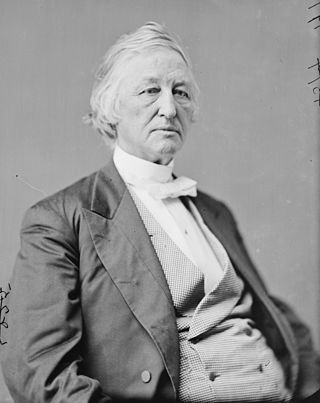Related Research Articles

Syracuse is a city in and the county seat of Onondaga County, New York, United States. It is the fifth-most populous city in the state of New York following New York City, Buffalo, Yonkers, and Rochester.

Geddes is a town in Onondaga County, New York, United States. As of the 2020 Census, the population was 17,088.

Little Italy Syracuse is an ethnic enclave in Syracuse, New York that contains several bakeries, cafés, pizzerias, restaurants, beauty salons, shops, bars and nightclubs. The main street in the neighborhood is North Salina Street.

New York State Railways was a subsidiary of the New York Central Railroad that controlled several large city streetcar and electric interurban systems in upstate New York. It included the city transit lines in Rochester, Syracuse, Utica, Oneida and Rome, plus various interurban lines connecting those cities. New York State Railways also held a 50% interest in the Schenectady Railway Company, but it remained a separate independent operation. The New York Central took control of the Rochester Railway Company, the Rochester and Eastern Rapid Railway and the Rochester and Sodus Bay Railway in 1905, and the Mohawk Valley Company was formed by the railroad to manage these new acquisitions. New York State Railways was formed in 1909 when the properties controlled by the Mohawk Valley Company were merged. In 1912 it added the Rochester and Suburban Railway, the Syracuse Rapid Transit Railway, the Oneida Railway, and the Utica and Mohawk Valley Railway. The New York Central Railroad was interested in acquiring these lines in an effort to control the competition and to gain control of the lucrative electric utility companies that were behind many of these streetcar and interurban railways. Ridership across the system dropped through the 1920s as operating costs continued to rise, coupled with competition from better highways and private automobile use. New York Central sold New York State Railways in 1928 to a consortium led by investor E. L. Phillips, who was looking to gain control of the upstate utilities. Phillips sold his stake to Associated Gas & Electric in 1929, and the new owners allowed the railway bonds to default. New York State Railways entered receivership on December 30, 1929. The company emerged from receivership in 1934, and local operations were sold off to new private operators between 1938 and 1948.

Elias Warner Leavenworth was an American lawyer and politician.
John Flint Kidder was a politician, civil engineer and railroad executive who built and later owned Northern California's Nevada County Narrow Gauge Railroad (NCNGRR) which, during its operation, never experienced an attempted robbery.
The Railroad industry in Syracuse, New York got its start in October 1831 when a convention held in the city marked one of the earliest moves to stimulate the era of railroad building which ultimately brought steam railroad service to New York State.
The Syracuse and Binghamton Railroad was established on August 18, 1851, and opened for business on October 18, 1854. The road merged in 1856 into Syracuse and Southern Railroad which was renamed to Syracuse, Binghamton and New York Railroad when the company reorganized after foreclosure in 1857.
The Syracuse Consolidated Street Railway, chartered on May 22, 1890, in Syracuse, New York. On July 1, 1890, the company leased, in perpetuity, several street railroads in the city including Third Ward Railway, Fourth Ward Railroad, Fifth Ward Railroad, Seventh Ward Railroad, Eleventh Ward Railroad, Genesee and Water Street Railroad, Woodlawn and Butternut Street Railway, Syracuse and Geddes Railway and New Brighton and Onondaga Valley Railroad. The rail ran a total distance of 24 miles (39 km) and had branches every 3 miles (4.8 km).
The Genesee and Water Street Railroad, a horse-drawn street trolley in Syracuse, New York, was established in 1865. The company was one of three different railways that were awarded operation franchise rights to run cars in James Street. The firm also secured the franchise to operate cars in Westcott Street, to South Beech Street, Euclid Avenue, College Place, University Place, Walnut Avenue and Madison Street.
The Syracuse and Geddes Railway, a horse-drawn street trolley in Syracuse, New York, was chartered on July 10, 1863. The line ran from Syracuse to Geddes, a suburb. The route ran from Salina Street and Fayette Street to Hemlock, Bridge and Furnace Street.
The Fifth Ward Railroad was a horse-drawn street trolley line in Syracuse, New York, and was originally approved for construction by New York State in 1850; however, the rail was not chartered until 1867 and finally opened for business in 1868. The company merged with Syracuse Consolidated Street Railway in 1890, after an agreement was made that allowed the new company to lease the lines.
The Syracuse and Onondaga Railway, a horse-drawn city railway, was chartered on April 29, 1863, and opened on July 25, 1864, in Syracuse, New York. The line commenced in Downtown Syracuse at Washington Street and terminated at Oakwood Cemetery at Brighton Avenue where it connected with the Onondaga Valley Railroad. By 1890, the total length of the road was 2 miles (3.2 km).
The New Brighton and Onondaga Valley Railroad, a horse-drawn street trolley line, was chartered on May 5, 1869, in Syracuse, New York. The road was also known as the New Brighton and Onondaga Railroad.
The Seventh Ward Railroad, a street trolley line in Syracuse, New York, was established in 1886 and held the city railway franchise rights to East Fayette Street. The total length of the road was 3 miles (4.8 km). The route followed Fayette Street from Salina Street to Montgomery Street, Jefferson, Grape, Kennedy, Renwick Avenue with final destination Oakwood Cemetery.
The Eleventh Ward Railroad, a street trolley line in Syracuse, New York, was established in 1889 and held the city railway franchise rights to East Fayette Street. The line followed East Fayette Street to Montgomery Street and from there through Burt, Cortland Avenue, Midland Avenue, Colvin Street, Mulberry, Elizabeth, Baker Avenue and terminating on Kennedy street.
The Third Ward Railway, an electric street trolley line in Syracuse, New York, was established in 1886 and ran a distance of 4 miles (6.4 km) commencing in Park Avenue and terminating at Solvay Process Company in Solvay, a suburb. A second extension was open for business on July 4, 1889, when a branch was added from West Genesee Street to the shore of Onondaga Lake, known as "lake shore."
The Woodlawn and Butternut Street Railway, a horse-drawn street trolley line in Syracuse, New York, was established in 1886. The road commenced at North Salina Street at the junction of James Street and traveled to Butternut street and Manlius Street with final destination, Woodlawn Cemetery.
The Fourth Ward Railroad, a street trolley line in Syracuse, New York, was organized in 1887 and opened in 1888. The company was one of three different railways that were awarded operation franchise rights to run cars in James Street.
References
- ↑ Whipple, Fred H. Whipple's Electric, Gas and Street Railway Financial Reference Directory. Electronic Library, 2011. Retrieved July 5, 2011.
- ↑ Bruce, Dwight Hall. Memorial history of Syracuse, N.Y., from its settlement to the present time. Electronic Library, 2011. Retrieved July 5, 2011.
- ↑ Boyd's Syracuse Boyd's City Directory 1875. Andrew Boyd, 1875.
- ↑ "First Streetcars Operated Here in 1860". Syracuse Herald . Syracuse, New York. December 14, 1922.
- ↑ American street railway investments. The Street Railway Publishing Company, 1899 p. 262. 1899. Retrieved February 18, 2011.